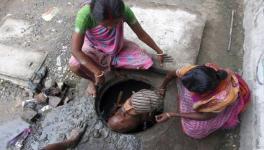Ease of Living Index Not Portraying Living Conditions of People, Say Experts

In order to improve the image of Indian cities globally, the Ministry of Housing and Urban Affairs recently released the Ease of Living index 2018, which measured the livability of people in 111 cities across the country. The index, claiming to measure cities based on a slew of exhaustive parameters, ranked Pune, Navi Mumabai and Greater Mumbai on first, second and third positions respectively. Interestingly, big metropolitan cities like Chennai, Delhi and Bengaluru performed poorly, and remained on 14th, 65th and 58th positions respectively.
The index, prepared by Ipsos Research Private Limited and Athena Infonomics Private Limited in association with The Economist Intelligence Unit, measured the cities on four parameters – institutional, social, economic and physical on a scale of 100 marks. The new index appears to be face-saving measure of the government after Indian cities continue to perform badly on several international living indices. But, this measure is not only replete with many flaws, but also fails in taking stock of the living conditions of people.
The index has failed to shed new light on the living conditions of the people, as it based its findings on secondary data in the form of old reports collected from municipal corporations of cities and other agencies. The result of opting for such method is visible; Pune, which topped the index, has its residents complaining about a crumbling public transport system. Similarly, 40 per cent of city's population is compelled to live in slums, and municipal authorities have failed consistently to come up with affordable housing schemes for people with low income.
The team, responsible for preparing the index, interviewed 60,000 persons for their remarks on their cities, but it did not give any weightage to it. The index report read, "It is important to note that in the current round of the Ease of Living Index assessment, indicator calculation and ranking is based only on 78 indicators, and no weightage was provided for the citizen perception component." Experts suggest that the sample size of 60,000 people is too small for reviewing cities, but its non-inclusion anyway raises serious questions.
Another glaring and important fact of urban India that appears to have been overlooked is that the provision of the basic services in the slums. Slums have emerged as one of the growing challenges of urbanisation in the absence of affordable housing and rehabilitation. A census report states that 64 million people live in India's slums. The problem becomes more severe with urban India, where 17 per cent people live in slums. Over 70 per cent of slum households get their water from a tap, but just half of them get water in their homes.
Talking to Newsclick, veteran town planner A Srivathsan said that the index should be called City Development Index, not Ease of Living Index, as it does not portray any credible information about the people living in the cities. He added that one city is entirely different from other in various aspects, and it is not justified to compare them.
He said, "The index has conceptual problems. It is not like other indices like Ease of Doing Business where cities are assessed on many rigorous but universal parameters. It is a mix of Human Development Index and Physical Index. For Example, Kerala and Delhi are two states which have higher HDI. But no city from the states is top 10 cities. Similarly, Cities like Erode and Tiruchipally cannot be compared with metropolitan cities. Mumbai will certainly beat these cities as far as the GDP is concerned."
Get the latest reports & analysis with people's perspective on Protests, movements & deep analytical videos, discussions of the current affairs in your Telegram app. Subscribe to NewsClick's Telegram channel & get Real-Time updates on stories, as they get published on our website.























